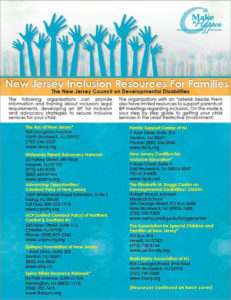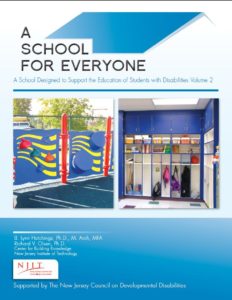Fifty years ago the landmark Brown vs. Topeka Board of Education court decision established that separate is not equal and that students educated in segregated settings are denied equal opportunity under the law. Since then, long-standing federal and state laws and landmark court decisions have reinforced that decision.
Ten years ago, the New Jersey Developmental Disabilities Council gathered information about segregation in New Jersey’s schools and presented the numbers and facts to interested parties. The result was a 1994 publication developed by the Council’s Education Subcommittee, entitled Separate and Unequal. The report described an entrenched pattern of segregation of students with disabilities in our State, gave data comparing New Jersey nationally, reported on research about the benefits of inclusion and made extensive short, medium, and long-term recommendations to move our state forward on this issue.
Ten years later, the now renamed New Jersey Council on Developmental Disabilities Education Task Force1 revisited the 1994 publication and prepared an update of that report. As they did in 1994, the numbers and facts in this document clearly show that the entrenched pattern of segregation remains with us today, despite the fact that the State has adopted several of the Subcommittee’s 1994 recommendations.




